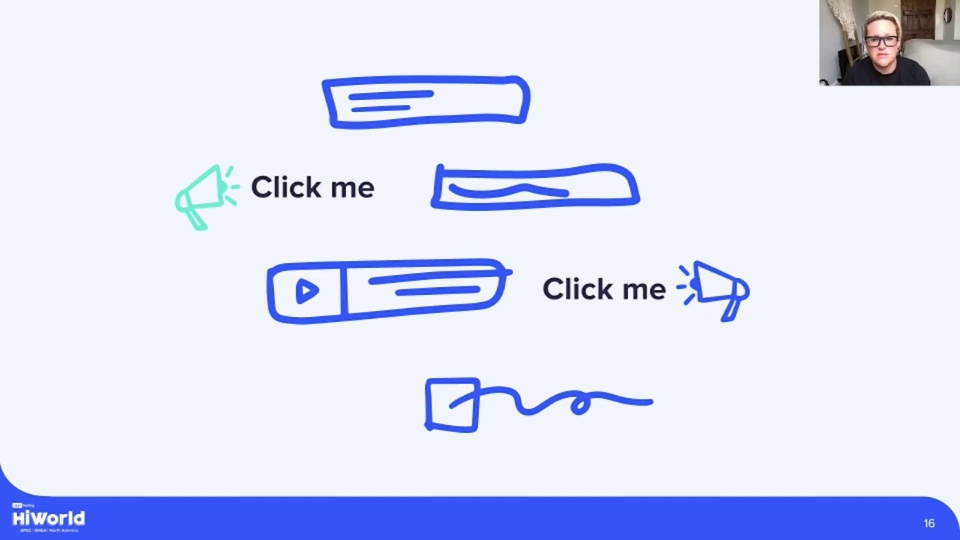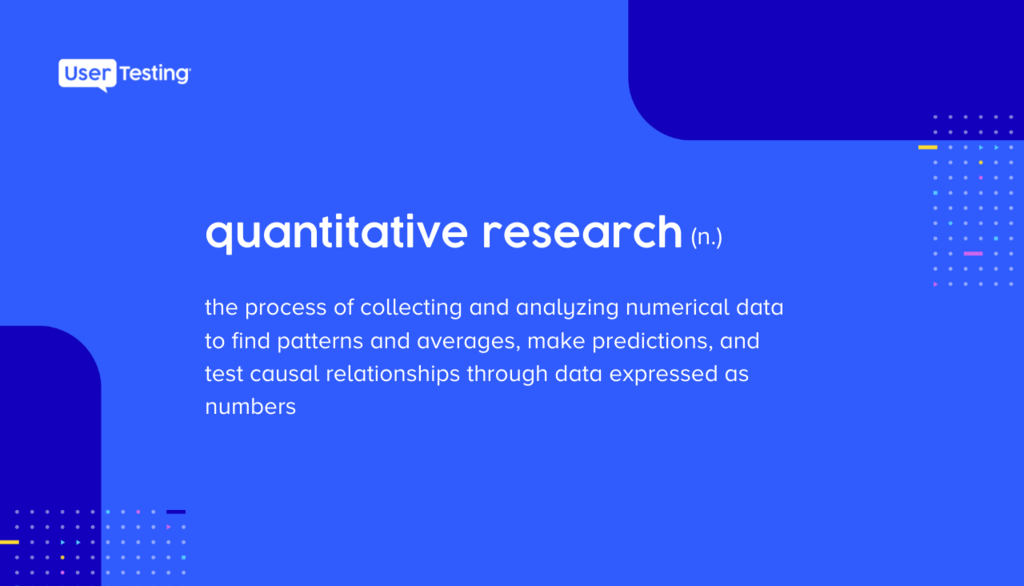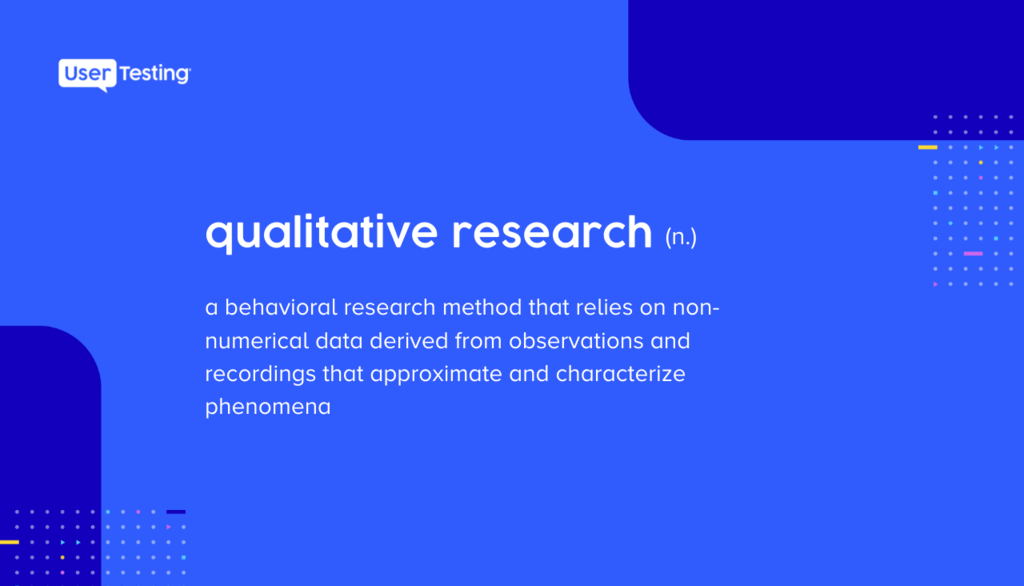
Qualitative vs. quantitative research: what's the difference?

While the topic of qualitative vs. quantitative research sounds intimidating, they’re easy concepts to understand, and they represent things that you’re probably doing already. Most business professionals want to get customer feedback and know their audience, whether you call it research or something else.
For one, suggesting that qualitative and quantitative are at odds with one another is misleading. While quantitative research is the method that most people are familiar with (and the one that gets all the credit), the two complement each other fundamentally. Together, they can give a more holistic view of a problem or situation. Having one without the other means that you’re only getting half a story. Both play a valuable role in measuring your customer experience.
After a sizeable European car rental company spent time and money developing a car rental subscription membership on a hunch, they were stumped by its poor performance. First, analytics showed that users saw the ads but didn’t sign up. Then, after getting feedback from a handful of users, it became painfully clear why no one wanted to belong to the exclusive club. Watch Kate Margolis, UX/UI Design Lead at Thirdfort, tell the story.

While there are significant differences between qualitative and quantitative research methods, it’s essential to understand the benefits and blind spots. So let’s start with quantitative.
What is quantitative research?
Quantitative research is the process of collecting and analyzing numerical data. It aims to find patterns and averages, make predictions, test causal relationships, and generalize results to broader populations by representing data expressed as numbers.

Quantitative research is unlike qualitative research in one critical aspect—it’s numerical. This is because the output of quantitative research is numbers and statistics.
Quantitative research methods
Some popular ways of conducting quantitative research include:
- Surveys (ratings, ranking, scales, and closed-ended questions)
- A/B testing
- Benchmarking
- Observational or listening methods
- Web analytics
Advantages and disadvantages of quantitative data
What’s excellent about quantitative data is that you can easily replicate it. Quantitative data collection is relatively easy to do, and so is analysis. Since you’re dealing with numbers, it’s typically easier to interpret quantitative data and present your findings to others in a less subjective way.
Advantages: Larger sample sizes, quicker, easier, less expensive, can uncover patterns and correlations, traditionally easier to automate, offers continuous information, data interpretation is more straightforward
Disadvantages: Less flexibility, can’t follow up, may not reflect actual feelings, lacks context It’s human nature to trust numbers. We tend to believe they’re concrete. More importantly, quantitative methods get more attention because it’s easier to tie quantitative measurements to performance metrics and ROI. Unfortunately, there are many ways in which numbers can be unreliable. While numerical data can tell you that there’s a problem, it seldom tells you why. Plus, by focusing on numbers only, there’s a risk of missing something. Here are some examples where quantitative data isn’t enough information to make an informed decision:
- An e-commerce agency notices that her client’s shoppers are dropping off on one of their biggest channels before the checkout, but they don’t know why.
- A product manager is getting survey data showing that new customers are not satisfied with the onboarding process. While she has an idea of what it could be, she’s not sure where to start.
- A marketing team spent weeks developing and rolling out a campaign that flopped. While the team believes they’re on the right track, the President of the company, who never liked the idea, tells them to abandon it altogether.
Lastly, a significant drawback to quantitative research is that numbers don’t convey stories well. So while it’s easy to share a table of data points with an audience, it’s harder to get them to absorb the information and remember it later.
What is qualitative research?
Qualitative research is a behavioral research method that relies on non-numerical data derived from observations and recordings that approximate and characterizes phenomena. It’s collecting, analyzing, and interpreting non-numerical data, such as language. It sometimes seeks to understand how an individual subjectively perceives and gives meaning to their social reality.

Instead of numbers, qualitative data comes from studying subjects in their natural environment and focusing on understanding the why and how of human behavior in a given situation. It’s especially effective in obtaining information about people's values, opinions, and behaviors. Data is collected through participant observation and interviews.
Qualitative research methods
There are three common qualitative research methods:
- Participant observation
- In-depth or unstructured interviews
- Focus groups
1. Participant observation
Use participant observation to collect data on naturally-occurring behaviors in their usual contexts.
2. In-depth or unstructured interviews
In-depth interviews are optimal for collecting data on individuals’ personal histories, perspectives, and experiences, mainly when exploring sensitive topics or follow-up questions are likely necessary. When asking open questions, the interviewer can get a real sense of the person’s understanding of a situation. For example, they might say one thing, but their body language says something else.
3. Focus groups
Focus groups effectively gather information from multiple subjects at once and generate broad overviews of issues or concerns related to the demographics represented.
Advantages and disadvantages of qualitative data
The most significant advantage to qualitative data is that it’s easy to present your data as a story to your audience. In this way, qualitative data has both staying power and the ability to persuade others. People remember stories and how they make them feel. While charts and numbers can convince others to change, they won’t always translate into action. Instead, qualitative data offers rich, in-depth insights that allow you to explore new contexts and deeper understandings.
Advantages: Allows for context, empathy, ambiguities and contradictions, deeper insights
Cons: Traditionally time-consuming and expensive, impossible to replicate, challenging to interpret raw data, analysis is subjective The cons of qualitative research are that it’s often not a statistically representative form of data collection, and it can require multiple data sessions, which can lead to varying analyses.
Examples of qualitative vs. quantitative research questions
When planning research, you want to be strategic with your test questions. Here are some examples of qualitative vs. quantitative questions to give you an idea of how they work.
Quantitative research questions
Quantitative research questions are typically set up so that the answer is numerical, statistical, or objective. This process is typically automated, and answers can’t be followed up.
- How long have you been a customer of our organization?
- On a scale of 1-5, how likely are you to purchase our products again?
- How often do you drink coffee at home?
- Do you prefer to watch movies at home or in the theatre?
Qualitative research questions
Qualitative research questions are open-ended. The interviewer can react to answers and probe for more detail.
- What does the app need to do to improve your experience?
- Do you have any comments, questions, or concerns about our website?
- What do you like most about your favorite coffee shop?
- What makes a movie good?
Why you need both qualitative and quantitative research
Most importantly, human insights come to life at the intersection of quantitative and qualitative data methodologies. Both methods can be helpful, but they also allow you to see things you may have missed. According to Justin Wei, Former Head of Digital Marketing at Royal Wins, while quantitative data is a black-and-white picture of a problem or opportunity, qualitative data can color your understanding.

Quantitative data is 'the what' and qualitative data is 'the why'
Commonly, quantitative data will surface trends that you can use as a springboard for qualitative research. However, it’s important to use qualitative research to drive innovation. Organizations that fall into the habit of only using qualitative research to react to quantitative data run the risk of reducing team efficiency and restricting their ability to optimize. In general, here are some common reasons to use qualitative research or quantitative research:
- Validate hypotheses: quantitative research will get you the key performance indicators (KPIs) you need when you need objective information to confirm or disprove your theory.
- Find answers: It’s typically easier and less expensive to have people fill out a survey than participate in a focus group. In this way, quantitative methods can help answer questions like: were you satisfied with your experience? Would you recommend us to a friend? On the other hand, qualitative research enables you to respond to open-ended questions like: why were you satisfied with your experience? Why would you recommend us to a friend?
- Uncover emotion: qualitative research is especially good at uncovering the emotions behind data. This can be verbal, body language, or facial expressions caught on video. It helps to hear and see your customers describe wants, needs, concerns, frustrations, etc. Qualitative data will get you that.
Watch Jonathan Greenblatt, User Research and Design Leader, explain how WarnerMedia uses quantitative and qualitative research to flesh out its user personas.

How UserTesting can help you conduct qualitative research
Researchers, marketers, product managers, and more conduct qualitative research daily using moderated or unmoderated testing with UserTesting. While the possibilities are endless, here are some common use cases:
- Ask your audience to record their behaviors and thoughts while interacting with your website.
- Create better solutions and experiences by exploring your users' attitudes, preferences, and opinions as they test out designs and prototypes.
- Optimize in-person experiences by watching your customers record themselves in a new store.
With UserTesting, business professionals can have access to qualitative data at the speed of quantitative analysis.

The complete guide to usability testing
Go beyond the basics with this complete guide. Get examples, methods, best practices and more.





